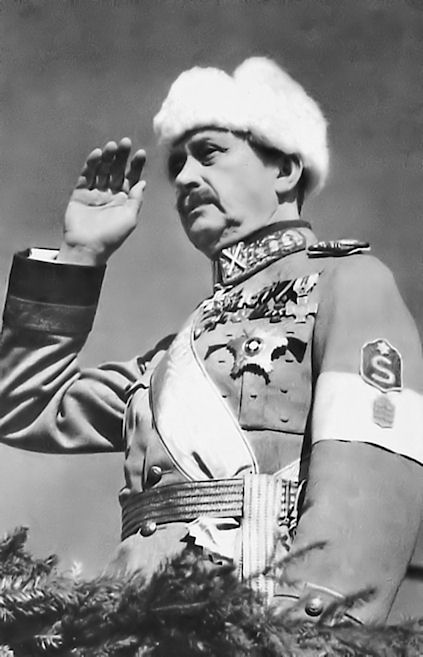|
T-28
The T-28 was a Soviet multi-turreted medium tank. The prototype was completed in 1931, and production began in late 1932. It was an infantry support tank intended to break through fortified defences. The T-28 was designed to complement the heavier T-35 (also multi-turreted), with which it shared turret designs. The type did not have great success in combat, but it played an important role as a development project for Soviet tank designers. A series of new ideas and solutions that were tried out on the T-28 were later incorporated in future models. Design history The T-28 was in many ways similar to the British Vickers A1E1 Independent tank, which greatly influenced tank design in the period between the wars, even though only a single prototype was manufactured in 1926. The Kirov Factory in Leningrad began manufacturing a tank that was based on the design of the British Independent in 1932. The T-28 tank was officially approved on 11 August 1933. The T-28 had one large turret ... [...More Info...] [...Related Items...] OR: [Wikipedia] [Google] [Baidu] |
T-35
The T-35 was a Soviet multi- turreted heavy tank of the interwar period and early Second World War that saw limited production and service with the Red Army. Often called a land battleship, it was the only five-turreted heavy tank in the world to reach production, but proved to be slow and mechanically unreliable. Most of the T-35 tanks still operational at the time of Operation Barbarossa were lost due to mechanical failure rather than enemy action. It was designed to complement the contemporary T-28 medium tank; however, very few were built. Outwardly, it was large; but internally, the spaces were cramped with the fighting compartments separated from each other. Some of the turrets obscured the entrance hatches. Production history The T-35 was developed by the OKMO design bureau of the Bolshevik Factory, which began work on a heavy tank in 1930. Two teams developed separate designs. The team headed by German engineer Grotte worked on the 100-ton four-turreted TG-5 tank, ... [...More Info...] [...Related Items...] OR: [Wikipedia] [Google] [Baidu] |
Parola Tank Museum
Parola Tank Museum, officially ''Armoured Vehicle Museum'' ( Finnish ''Panssarimuseo'') is a military museum located 110 kilometres north of Helsinki in Parola, near Hämeenlinna, Finland, a few kilometres from the Finnish Army Armoured Brigade training unit. It displays various tanks, armoured vehicles and anti-tank guns used by the Finnish Defence Forces throughout their history, including their latest Leopard 2A4 tank. A rare exhibit is an armoured train used in World War II. The museum was opened on June 18, 1961, when there were 19 tanks and 12 anti-tank guns on display. Full list of vehicles * Renault FT-17 * Vickers-Carden-Loyd * Vickers 6-ton * T-26 * T-28 * T-50 * T-60 * T-70 * BT-42 * T-34 * T-34-85 * JSU-152 * KV-1 * KV-1E * BA-20M * BA-10 * T-20 Komsomolets * T-54 * T-55M * T-72M1 * ZSU-57-2 * BTR-50 * BTR-60 * BTR-80 * BMP-1 * PT-76 * Leopard 2A4 * StuG ''III Ausf. G'' * Panzerkampfwagen IV * FAMO * Daimler Ferret * Sisu armoured car * H ... [...More Info...] [...Related Items...] OR: [Wikipedia] [Google] [Baidu] |
Degtyarev Light Machine Gun
The Degtyaryov machine gun (russian: Пулемёт Дегтярёвa Пехотный, Pulemyot Degtyaryova Pekhotny literally: "Degtyaryov's infantry machine gun") or DP-27/DP-28 is a light machine gun firing the 7.62×54mmR cartridge that was primarily used by the Soviet Union, with service trials starting in 1927, followed by general deployment in 1928. Besides being the standard Soviet infantry light machine gun (LMG) during World War II, with various modifications it was used in aircraft as a flexible defensive weapon, and it equipped almost all Soviet tanks in WWII as either a flexible bow machine gun or a co-axial machine gun controlled by the gunner. It was improved in 1943 producing the DPM, but it was replaced in 1946 with the RP-46 which improved on the basic DP design by converting it to use belt feed. The DP machine gun was supplemented in the 1950s by the more modern RPD machine gun and entirely replaced in Soviet service by the general purpose PK machine gun in t ... [...More Info...] [...Related Items...] OR: [Wikipedia] [Google] [Baidu] |
Vickers A1E1 Independent
The Independent A1E1 is a multi- turreted tank that was designed by the British armaments manufacturer Vickers between the First and Second World Wars. Although it only ever reached the prototype stage and only a single example was built, it influenced many other tank designs. The A1E1 design can be seen as a possible influence on the Soviet T-100 and T-28 tanks, the German '' Neubaufahrzeug'' tanks, and the British Medium Mk III and Cruiser Mk I (triple turret) tank designs. The Soviet T-35 tank was heavily influenced by its design. Design The Independent was a multi-turret design, having a central gun turret armed with the 3 pounder (47 mm) gun, and four subsidiary turrets each armed with a 0.303 inch Vickers machine gun. The subsidiary turrets were mounted two at the front and two to the rear of the turret (about halfway along the hull). The gun of the left rear turret was able to elevate to engage aircraft. The tank was designed to have heavy firepower, self-defence ... [...More Info...] [...Related Items...] OR: [Wikipedia] [Google] [Baidu] |
Mine Roller
A mine roller or ''mine trawl'' is a demining device mounted on a tank or armoured personnel carrier, designed to detonate anti-tank mines. It allows engineers to clear a lane through a minefield which is protected by enemy fire. The device is usually composed of a fork or two push arm assemblies fitted to the front of a tank hull, with two banks of rollers that can be lowered in front of the tank's tracks. Each roller bank has several heavy wheels studded with short projecting steel girders, which apply a higher ground pressure than the tank's tracks. This ensures the explosion of pressure-fused anti-tank mines, which would otherwise explode under the track itself. History At the end of the First World War, the British Army Engineers Major Giffard LeQuesne Martel and Major Charles Inglis experimented with tank bridges and mine rollers based on the Mark V tank. Three special tank battalions were mustered for trials at Christchurch in Hampshire, England, in 1918. Because ... [...More Info...] [...Related Items...] OR: [Wikipedia] [Google] [Baidu] |
Mikulin M-17
The Mikulin M-17 was a Soviet-licensed copy of the German BMW VI V-12 liquid-cooled aircraft piston engine, further developed by Alexander Mikulin and used by Soviet aircraft and tanks during World War II. Production began in 1930 and continued through 1942. More than 27,000 were produced, of which 19,000 were aircraft engines while the rest were used in Soviet tanks of the period. Acquisition and production The Soviets had bought examples of BMW's III and IV engines earlier in the 1920s and bought two examples of the VI engine in 1926 for evaluation. Following successful bench trials of the engine the Soviets decided to purchase a license for it. A deal was concluded in October 1927 after prolonged negotiations. The Soviets paid $50,000 and were to pay 7.5% of the price of each engine produced after the first fifty. In exchange, the German company was to inform the Soviets of all changes to the engine for a period of five years. Soviet engineers and technicians were to be traine ... [...More Info...] [...Related Items...] OR: [Wikipedia] [Google] [Baidu] |
Medium Tank
A medium tank is a classification of tanks, particularly prevalent during World War II which represented a compromise between the mobility oriented light tanks and the armour and armament oriented heavy tanks. A medium tank's classification is not actually based on weight, but off of tactical usage and intended purpose; for instance the German Panzerkampfwagen V Panther medium tank has a mass similar to contemporary Allied heavy tanks. The most widely produced, cost effective and successful tanks of World War II (the German Panzer IV, the Soviet T-34, and the American M4 Sherman) were all medium tank designs. Many of the medium tank lines became what are called main battle tanks in most countries. History The first tanks to carry the name "Medium" appeared in the First World War with the British Medium Mark A Whippet. It was smaller, lighter and faster than the British heavy tanks of the time and only carried machine guns. The medium tank doctrine came into use in the ... [...More Info...] [...Related Items...] OR: [Wikipedia] [Google] [Baidu] |
Mannerheim Line
The Mannerheim Line ( fi, Mannerheim-linja, sv, Mannerheimlinjen) was a defensive fortification line on the Karelian Isthmus built by Finland against the Soviet Union. While this was never an officially designated name, during the Winter War it became known as the Mannerheim Line, after Finnish Army's then commander-in-chief Field Marshal Baron Carl Gustaf Emil Mannerheim. The line was constructed in two phases: 1920–1924 and 1932–1939. By November 1939, when the Winter War began, the line was by no means complete. History of construction Background After the October Revolution in the Russian Empire, the Finns declared independence in 1917. Although the Soviet Union recognized Finland's independence, the Finns did not trust their sincerity. The relationship between the two countries deteriorated, with Soviet Russia supporting the Red Guard during the Finnish Civil War in 1918. After the victory of the White Guard, a group of Finnish communists fled to Soviet Russia and ... [...More Info...] [...Related Items...] OR: [Wikipedia] [Google] [Baidu] |
Self-propelled Gun
Self-propelled artillery (also called locomotive artillery) is artillery equipped with its own propulsion system to move toward its firing position. Within the terminology are the self-propelled gun, self-propelled howitzer, self-propelled mortar, and rocket artillery. They are high mobility vehicles, usually based on continuous tracks carrying either a large field gun, howitzer, mortar, or some form of rocket/missile launcher. They are usually used for long-range indirect bombardment support on the battlefield. In the past, self-propelled artillery has included direct-fire vehicles, such as assault guns and anti-tank guns ( tank destroyers). These have been armoured vehicles, the former providing close fire-support for infantry and the latter acting as specialized anti-tank vehicles. Modern self-propelled artillery vehicles often mount their main gun in a turret on a tracked chassis so they superficially resemble tanks. However they are generally lightly armoured wh ... [...More Info...] [...Related Items...] OR: [Wikipedia] [Google] [Baidu] |
Panzer IV
The ''Panzerkampfwagen'' IV (Pz.Kpfw. IV), commonly known as the ''Panzer'' IV, was a German medium tank developed in the late 1930s and used extensively during the Second World War. Its ordnance inventory designation was Sd.Kfz. 161. The Panzer IV was the most numerous German tank and the second-most numerous German fully tracked armoured fighting vehicle of the Second World War; 8,553 Panzer IVs of all versions were built during World War II, only exceeded by the StuG III assault gun with 10,086 vehicles. Its chassis was also used as the base for many other fighting vehicles, including the Sturmgeschütz IV assault gun, the Jagdpanzer IV self-propelled anti-tank gun, the '' Wirbelwind'' self-propelled anti-aircraft gun, and the '' Brummbär'' self-propelled gun. The Panzer IV saw service in all combat theatres involving Germany and was the only German tank to remain in continuous production throughout the war. It was originally designed for infantry support, while th ... [...More Info...] [...Related Items...] OR: [Wikipedia] [Google] [Baidu] |
Second World War
World War II or the Second World War, often abbreviated as WWII or WW2, was a world war that lasted from 1939 to 1945. It involved the World War II by country, vast majority of the world's countries—including all of the great powers—forming two opposing military alliances: the Allies of World War II, Allies and the Axis powers. World War II was a total war that directly involved more than 100 million Military personnel, personnel from more than 30 countries. The major participants in the war threw their entire economic, industrial, and scientific capabilities behind the war effort, blurring the distinction between civilian and military resources. Air warfare of World War II, Aircraft played a major role in the conflict, enabling the strategic bombing of population centres and deploying the Atomic bombings of Hiroshima and Nagasaki, only two nuclear weapons ever used in war. World War II was by far the List of wars by death toll, deadliest conflict in hu ... [...More Info...] [...Related Items...] OR: [Wikipedia] [Google] [Baidu] |
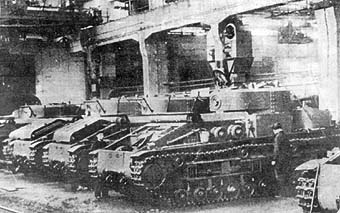
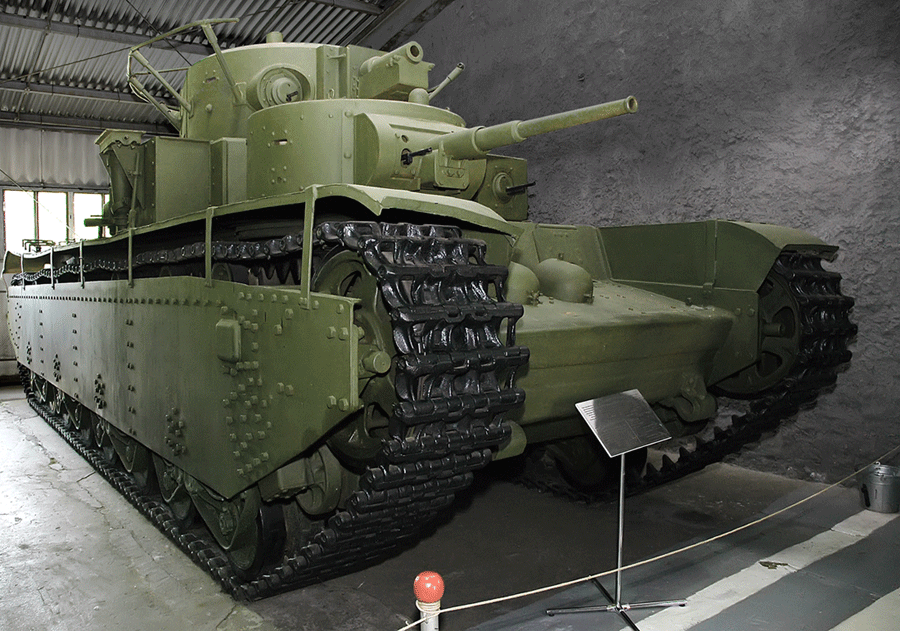
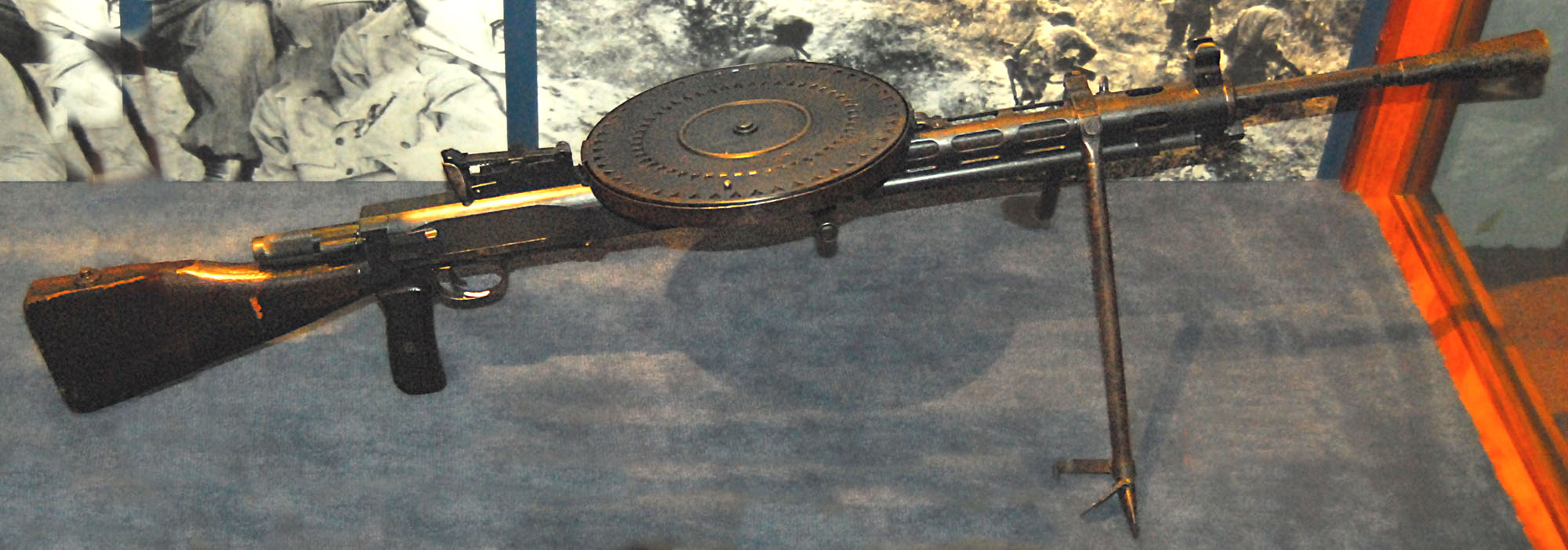
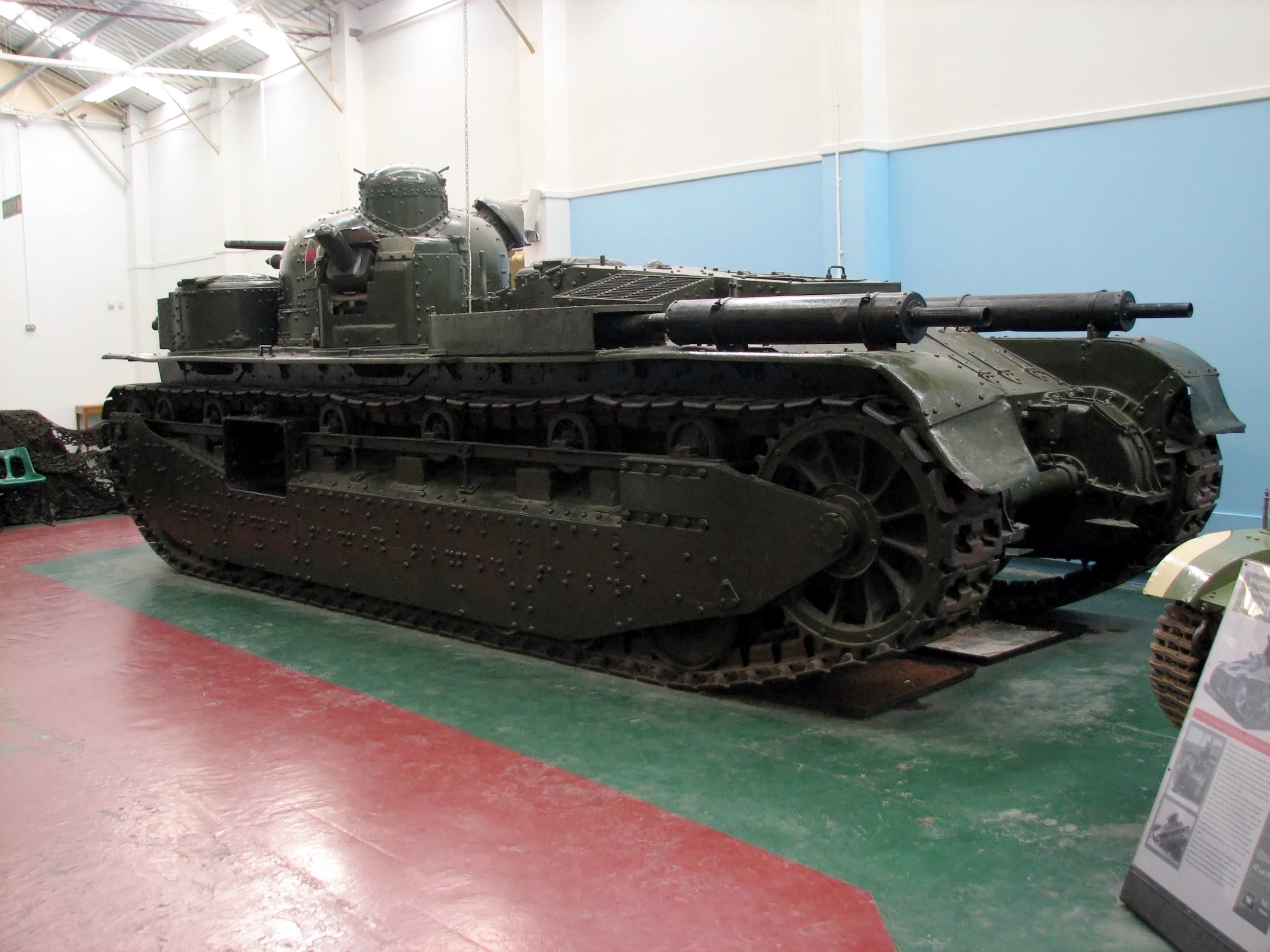

.jpg)
